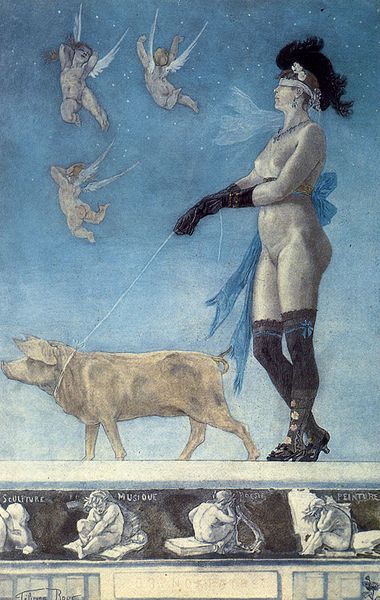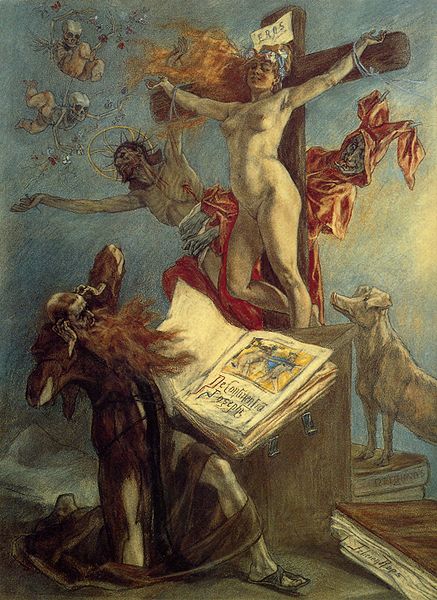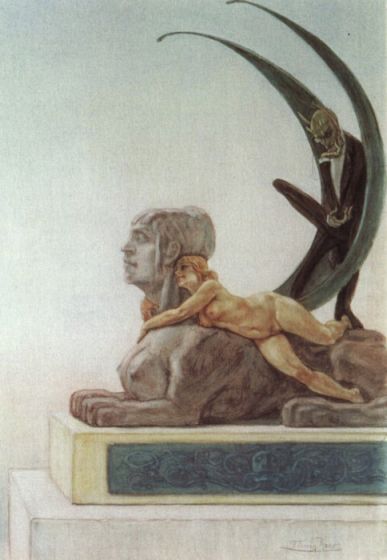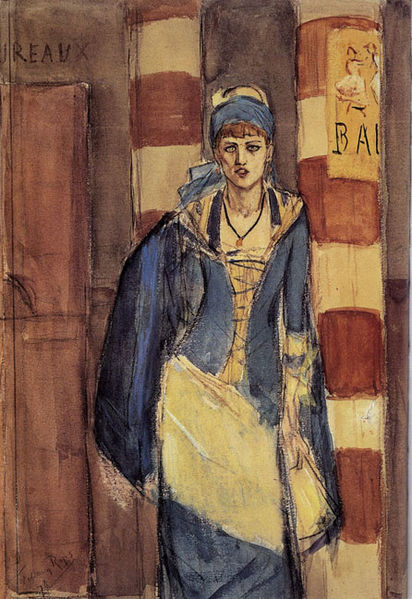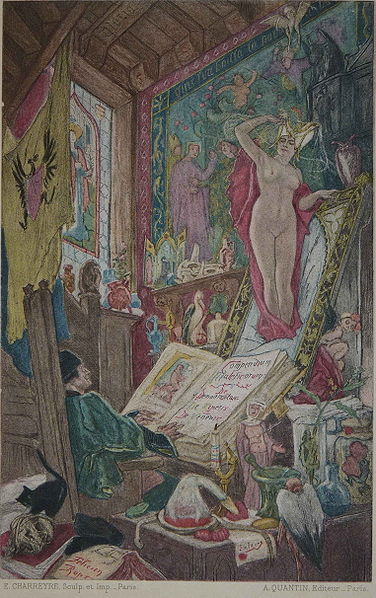<Back to Index>
- Painter Félicien Rops, 1833
PAGE SPONSOR
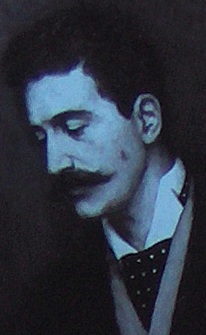
Félicien Rops (7 July 1833 - 23 August 1898) was a Belgian artist, and printmaker in etching and aquatint.
Rops was born in Namur as the only son to Nicholas Rops and Sophie Maubile. He was educated at the University of Brussels. Rops's forté was drawing more than painting in oils; he first won fame as a caricaturist.
In 1857, he married Charlotte Polet de Faveaux, with whom he had two children: Paul and Juliette. Juliette died at a young age.
After the failure of his marriage, he moved to Paris in 1874. There, he lived with the Duluc sisters: Aurélie and Léontine Duluc. With Léontine Duluc, he had one daughter, Claire. Claire went on to marry Belgian author Eugène Demolder.
Rops's eyesight began to fail in 1892. He kept up his literary associations until his death.
Félicien Rops was a freemason and a member of the Grand Orient of Belgium.
Rops met Charles Baudelaire towards the end of the poet's life in 1864, and Baudelaire left an impression upon him that lasted until the end of his days. Rops created the frontispiece for Baudelaire's Les Épaves, a selection of poems from Les Fleurs du mal that had been censored in France, and which therefore were published in Belgium.
Rops's association with Baudelaire and with the art he represented won his work the admiration of many other writers, including Théophile Gautier, Alfred de Musset, Stéphane Mallarmé, Jules Barbey d’Aurevilly, and Joséphin Péladan. He was closely associated with the literary movement of Symbolism and Decadence.
Like the works of the authors whose poetry he illustrated, his work tends to mingle sex, death and Satanic images. Felicien Rops was one of the founding members of Société Libre des Beaux - Arts of Brussels (Free Society of Fine Arts, 1868 – 1876) and Les XX ("The Twenty," formed 1883).
